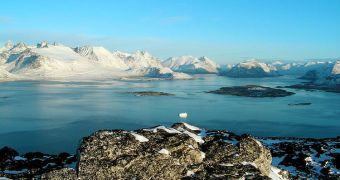According to researchers at the University of Wisconsin-Madison (UWM), who were led by geosciences professor Anders Carlson, ice core samples collected from Greenland cannot be interpreted without error, and provide conclusions that are subjected to certain percentages of error.
Scientists have been using these samples as so-called historical thermometers for many years. They collect ice from about a mile (1.6 kilometers) under the surface of glaciers on the massive island, and then analyze the ration of oxygen isotopes found within these samples.
This helps them obtain a lot of information about snow that fell at this location thousands of years ago. By extension, they can learn more about how the climate of the Northern Hemisphere evolved. Data can then be extrapolated on the ancient global climate.
In turn, these datasets are then used in numerical simulations meant to determine how global warming will influence modern-day climate. Previously, it was thought that ice core samples represented a straightforward indicator of past air temperature, but the new study shows that that may not be the case.
“We don’t believe the ice cores can be interpreted purely as a signal of temperature. You have to consider where the precipitation that formed the ice came from,” Carlson explains. Details of the study he led appear in the June 25 issue of the journal Proceedings of the National Academy of Sciences.
In Greenland, for example, the ice records covering a period of cold temperature called the Younger Dryas (which occurred around 13,000 years ago) differ significantly from similar records in other parts of the Northern Hemisphere.
“In terms of temperature during the Younger Dryas, the only thing that looks like Greenland ice cores are Greenland ice cores,” Carlson explains. His investigation was supported by the US National Science Foundation (NSF) and Department of Energy (DOE).
“They are supposed to be iconic for the Northern Hemisphere, but we have four other records that do not agree with the Greenland ice cores for that time. That abrupt cooling is there, just not to the same degree,” the expert goes on to say.
In the future, scientists will have to be more careful about the way they integrate results obtained from Greenland ice cores into larger models meant to simulate modern climate change.
“You can’t take one difference and interpret it solely as changes in temperature, and that’s what we’re seeing here in the Greenland ice cores,” Carlson concludes.

 14 DAY TRIAL //
14 DAY TRIAL //